评价性言语行为的语用分析
VIP免费
ii
ABSTRACT
In the field of modern linguistics, the study on speech act occupies an important
place. Evaluative speech act (ESA) reflects the emotional state of the speaker. This
thesis analyzes the constitutive rules of ESA, which are necessary and objective
conditions for communication, introduces other characteristics of evaluative speech act,
such as performativity, intentionality, authenticity and functionality, discusses the
influence of contextual factors upon ESA and compares the performing strategies and
respondent model in English and Chinese ESA. It aims to provide a detailed and
systematic description about ESA and reveal the rules in performing ESA.
Evaluative speech acts can be mainly classified into positive and negative
evaluative speech acts. Compliment is the main form of positive evaluative speech act.
It is a kind of speech act in which the speaker expresses his/her praise to the hearer
directly or implicitly. Its performing strategies and responses are high-formulized in
both English and Chinese.The main form of negative evaluative speech act is criticism.
Because criticism is a typical face-threatening speech act, when performing it the
speaker must employ appropriate pragmatic strategies to achieve the ideal
communicative intention.
Different languages are influenced by their own cultures. Therefore, evaluative
speech acts may take different performing models and contents in accordance with
different cultures and traditions. Chinese and Engilsh are under the influence of
different cultures, so in terms of the use of evaluative speech acts there exist many
differences in strategies and respondent models. In this thesis, the author collected data
from novels, movies and TV series to analyze the similarities and differences in Chinese
and English evaluative speech acts, which would be of practical value to the
improvement of the ability in corss-cultural communication.
Key words: evaluative speech act (ESA), context, compliment, criticism,
performing strategies
iii
摘 要
在语言学中,言语行为的研究具有极其重要的地位。评价性言语行为主要反
映说话者的情感状态。本文分析了评价性言语行为的构成性规则,这是语言交际
的必备客观条件;介绍了评价性言语行为的其他特性,如施为性,目的性,真实
性和功能性;讨论了语境因素对评价性言语行为的影响;并就中西方评价性言语
行为的实施策略及应答模式进行了分析比较。主要目的在于对评价性言语行为进
行全面系统的描述并揭示评价性言语行为在实施中的一些规律。
评价性言语行为主要可以分为:肯定性评价言语行为和否定性评价言语行为。
称赞语(或恭维语)是肯定性言语行为的主要形式,它是说话者向对方直接或含
蓄地表达赞许的一种言语行为,其实施策略和回应方式比较程式化。否定性评价
言语行为以批评语为主。由于这种言语行为是典型的面子威胁言语行为,因此在
实施批评言语行为时,说话者要使用一定的语用策略,选择适当的批评方式,以
达到理想的交际目的。
不同的语言受到各自文化的影响,因此评价性言语行为也具有与本民族文化、
传统相对应的表现模式和内容。中国和西方的文化不同,因此中国人和西方人在
评价性言语行为的实施及其应答方式上存在诸多差异。本文从中外小说、电影、
电视剧对话中搜集语料,尝试挖掘出中西方评价性言语行为实施中的不同策略并
进行比较分析。这将有助于人们有效地提高跨文化交际的能力。
关键词:评价性言语行为 语境 赞扬语 批评语 实施策略
CONTENTS
ACKNOWLEDGEMENTS………………………………….……………………..…ⅰ
ABSTRACT…………………….……………………………………………………...ⅱ
摘 要……………………………………………………………………………ⅲ
Chapter 1 Introduction ……………………………………………………………......1
§1.1 Motivation of the thesis………………………………………………………...1
§1.2 Rationale and methodology of the study……………………………………….1
§1.3 Organization of the thesis………………………………………………………2
Chapter 2 Review on Pragmatic Theories ….………………………………………...4
§2.1 Speech Act Theory ……………………………………………………………..4
§2.1.1 Austin’s speech act theory…………………………………………………4
§2.1.2 Searle’s revision of Austin’s theory and indirect speech act theory…….5
§2.2 Grice’s implicature theory and Cooperative Principle……………….………...6
§2.3 Politeness Principle……………………………………………………………..7
§2.3.1 Goffman’s ‘face’ theory………………………….………………………...7
§2.3.2 Brown & Levinson’s Face Theory…………………………………………8
§2.3.3 Leech’s Politeness Principle……………………………………………..9
Chapter 3 Analyzing Evaluative Speech Acts (ESAs)……………………..………11
§3.1 Definition of evaluative speech acts ……..…………………………………...11
§3.2 Classification of evaluative speech acts……………………………………....11
§3.3 Constitutive rules of evaluative speech acts…………………………………..12
§3.3.1 The constitutive rules in Searle’s speech act theory…………………...12
§3.3.2 The constitutive rules of evaluative speech acts………………………13
§3.4 Performativity of evaluative speech acts……………………………………...14
§3.5 Authenticity, intentionality and functionality of ESAs……………………...15
§3.5.1 Authenticity of ESAs……………………………………………………15
§3.5.2 Intentionality and Functionality of ESAs……………………………….17
Chapter 4 Contextual Influence on ESA…………………………………………..19
§4.1 The concept of context…………………………………..…………………….19
§4.2 The components of context……………………………………………………21
§4.3 Context and its function in understanding speech acts………………………..22
§4.4 The influence of contextual factors upon evaluative speech acts……………..24
§4.4.1 Evaluative speech acts and linguistic context…………………………..24
§4.4.2 Evaluative speech acts and situational context…………………………24
§4.4.3 Evaluative speech acts and cultural context…………………………….25
§4.4.4 The influence of psychological state of the interlocutor upon ESAs…...25
Chapter 5 The Strategies Used in Positive ESA and Its Respondent Model………27
§5.1 The strategies used in positive ESA…………………………………………..27
§5.1.1 Topics of positive ESA…………………………………………………...27
§5.1.2 The strategies used in positive ESA……………………………………...30
§5.2 The respondent model of positive ESA……………………………………….35
§5.2.1 The analysis of English respondent model of positive ESA……………...36
§5.2.2 The analysis of Chinese respondent model of positive ESA……………..38
§5.2.3 The pragmatic principles in the respondent model of positive ESA…….39
Ch a pt e r 6 Th e S tr a t e gi e s U se d i n N e ga t iv e E S A a n d I ts R es p o nd e nt
M o d e l … … . . . 4 2
§6.1 The strategies used in negative ESA in Chinese and English…………………42
§6.1.1 Off-record strategies……………………………………………………...42
§6.1.2 On-record strategies………………………………………………………45
§6.2 The differences in strategies used by Chinese and English negative ESA.…...48
§6 .2 . 1 T h e d i ff e r e n c e s i n s t r a t e g ie s u s e d b y C h i n e se a nd E n g li s h
negative ESA………………………………...…………...………………………48
§6.2.2 The reasons for the differences…………………………………………...49
§6.3 The respondent model to negative ESA……………………………...…….…50
Chapter 7 Conclusion…………………………………………………………...…….55
§7.1 Summary………………………………………………………………………55
§7.2. Limitations of the research and suggestions for further study……………......56
BIBLIOGRAPHY……………………………………………………………………..58
在读期间公开发表的论文………………………………………………………….....61
Chapter 1 Introduction
1
Chapter 1 Introduction
§1.1 Motivation of the thesis
It is well-known that language is an important communicative tool.
Communication is the basis of all human contact. Understanding human communication
means knowing something about what happens when people interact, why it happens,
what effects it produces, and finally what we can do to influence the communicative
intentions, such as, transmitting messages and thoughts, expressing beliefs, emotions or
attitudes by using various kinds of language strategies.
It is natural that in daily communication people use evaluative speech acts
consciously or unconsciously. For example, “Mr. Bodewell! I think the suit looks great.”
“Boner, you are trustworthy and good hearted!” “That’s absolutely the worst party I
have ever been to!” When uttering these words, the speaker offers evaluation to the
things they are talking about. Praise, compliment, gratulation, complaint, blame,
criticism, sarcasm and ridicule can all be ranked as evaluative speech acts. The aim of
evaluative speech acts is to express evaluation for things instead of reporting the
information about them. This kind of speech acts reflects the emotional state of the
speaker. The topics of evaluative speech can be the interlocutor himself, his behavior or
his attributes and belongings.
Evaluating is a common way of thinking and a universal linguistic phenomenon.
With the development of modern linguisitcs, more and more linguists and scholars
become interested in the study of evaluation. However, the research on evaluative
speech acts is limited to separate phenomena such as compliment, criticism and sarcasm.
It lacks a detailed description and systematic study on evalutive speech acts. The present
thesis will provide a detailed and systematic description about evaluative speech acts
and reveal the rules in the performing of them.
§1.2 Rationale and methodology of the study
Since evaluative speech act is an important kind of speech act, its analysis requires
important theories in pragmatics, such as Speech Act Theory, Implicature Theory,
Co-operative Principle and Politeness Principle.
There are many researchers who study compliment and criticism respectively.
However there are less researchers who combine the two speech acts into one general
category —evaluative speech acts. This thesis focuses on the work which combines
The Pragmatic Analysis of Evaluative Speech Acts
2
compliment and criticism into evalutive speech acts and classifies them as positive and
negative evaluative speech act respectively.
Many researchers engaged in the study of compliment and criticism now carry out
small-scale experiments on a certain number of college students, or citizens in a small
village. They conduct tests on subjects with very similar backgrounds through
questionaire, interview or DCT (Discourse Completion Test) to reach some findings in
research into compliment or criticism. Meanwhile, most cases collected belong to
random colloquial examples. Data collected in this way are less sufficient,
representative and objective to some extent. So different from other researches, the
present study is carried out by the use of more scientific experimental findings from
Manes & Wolfson, Herbert, Jia Yuxin and Chen Rong whose experiments are done in an
all-around way, together with positive and negative evaluative speech acts cases from
literature works and movies or TV series clips. Language in literature and movies or TV
series is one bright mirror to reflect the realistic world and popular culture.
§1.3 Organization of the thesis
The thesis is composed of seven parts in an attempt to provide a detailed and
systematic description about evaluative speech act and reveal the rules in performing
evaluative speech act.
Chapter 1 serves as an introduction to the study, including motivation of the thesis,
rationale and methodology of the study and organiztion of the thesis.
In chapter 2 some theories are listed that theoretically direct the realization of
evaluative speech acts. Speech act theory, implicature theory, co-operative principle and
politeness principle are drawn to function as the supporting theories for the whole
thesis.
Chapter 3 provides an analysis of evaluative speech acts. First the definition and
classification of evaluative speech acts are introduced. And then the author analyzes the
constitutive rules of evaluative speech acts accroding to Searle’s general constitutive
rules of speech act. After that, some characteristics of evaluative speech acts are
discussed, such as performativity, intentionality, authenticity and functionality.
Chapter 4 reveals the influence of contextual factors on the choice of strategies in
evaluative speech acts.
Chapter 5 and 6 present pragmatic strategies used in positive and nagetive
Chapter 1 Introduction
3
evuluative speech acts respectively and analyze their respondent models.
Lastly, chapter 7 summarizes the main points mentioned in this thesis, points out
the limitations of the research and makes some suggetions for further study.
摘要:
展开>>
收起<<
iiABSTRACTInthefieldofmodernlinguistics,thestudyonspeechactoccupiesanimportantplace.Evaluativespeechact(ESA)reflectstheemotionalstateofthespeaker.ThisthesisanalyzestheconstitutiverulesofESA,whicharenecessaryandobjectiveconditionsforcommunication,introducesothercharacteristicsofevaluativespeechact,su...
相关推荐
-
跨境电商商业计划书模版VIP免费
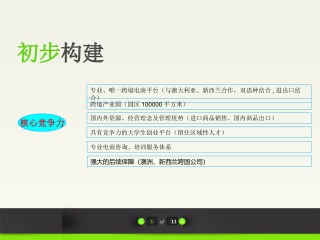
 2025-01-09 26
2025-01-09 26 -
跨境电商方案范文VIP免费
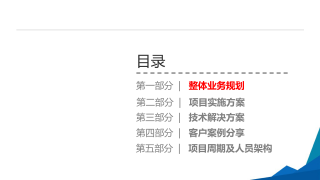
 2025-01-09 14
2025-01-09 14 -
创业计划书VIP免费
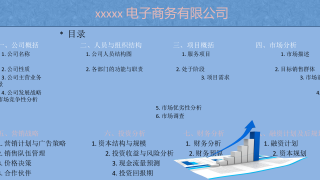
 2025-01-09 18
2025-01-09 18 -
xx生鲜APP计划书VIP免费

 2025-01-09 12
2025-01-09 12 -
跨境电商创业园商业计划书(盈利模式)VIP免费

 2025-01-09 8
2025-01-09 8 -
跨境电商计划书VIP免费
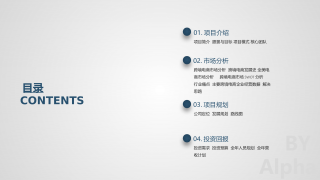
 2025-01-09 13
2025-01-09 13 -
绿色食品电商平台项目计划书VIP免费

 2025-01-09 22
2025-01-09 22 -
农产品电子商务商业计划书VIP免费

 2025-01-09 8
2025-01-09 8 -
农村电商平台商业计划书VIP免费

 2025-01-09 13
2025-01-09 13 -
生鲜商城平台商业计划书VIP免费
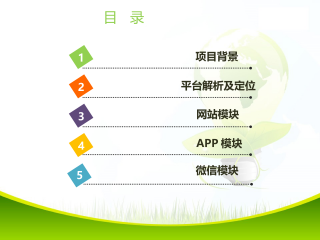
 2025-01-09 21
2025-01-09 21
作者:赵德峰
分类:高等教育资料
价格:15积分
属性:64 页
大小:663.41KB
格式:PDF
时间:2024-11-19






